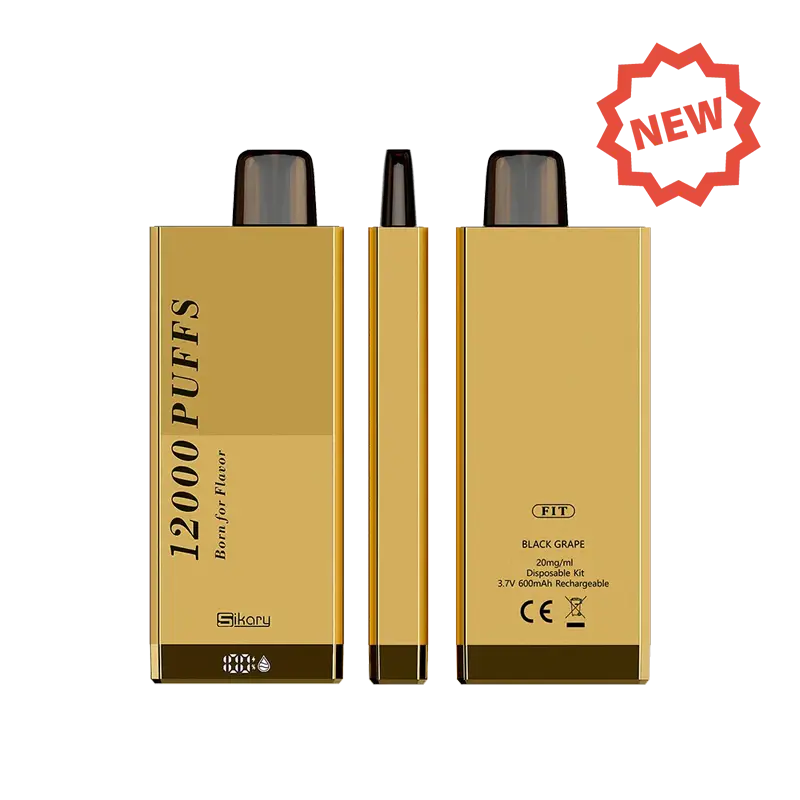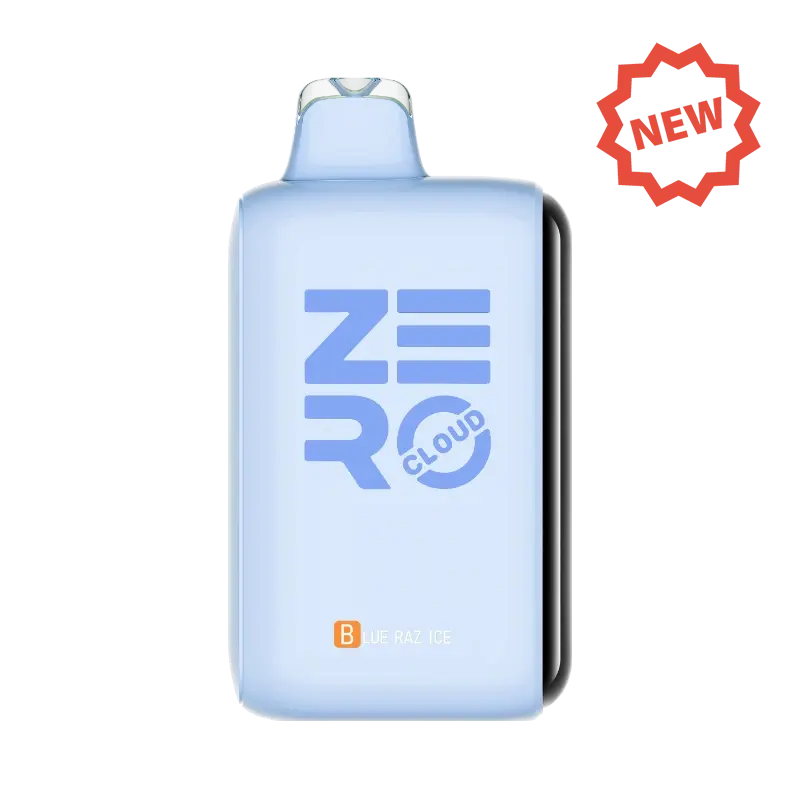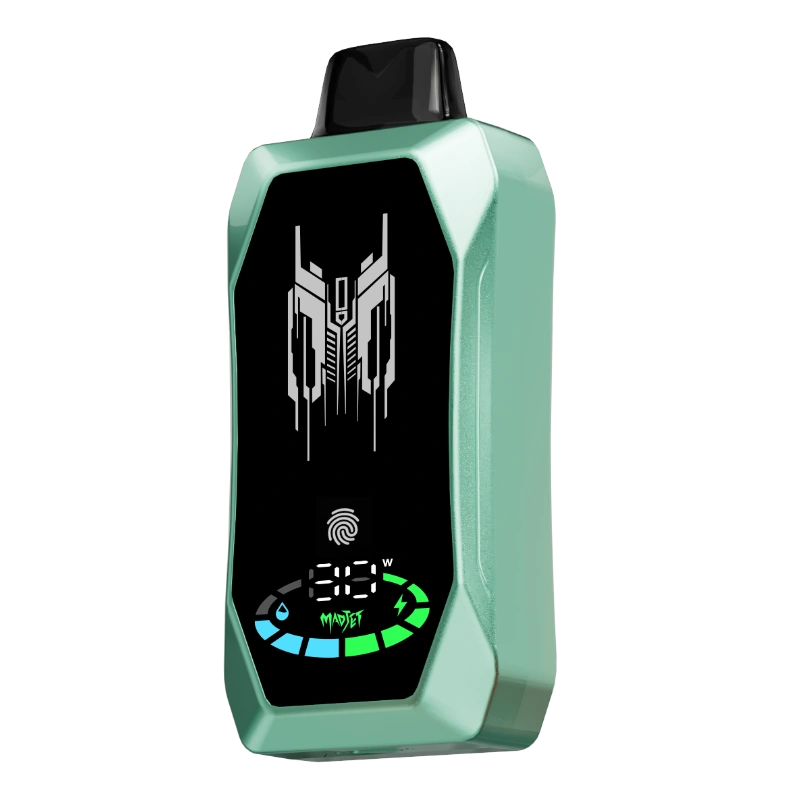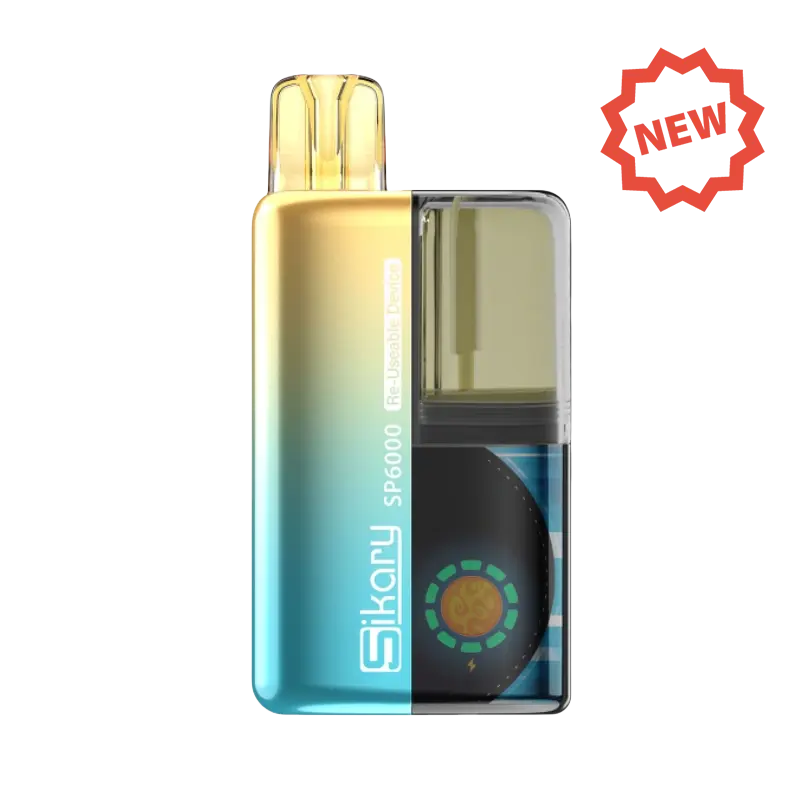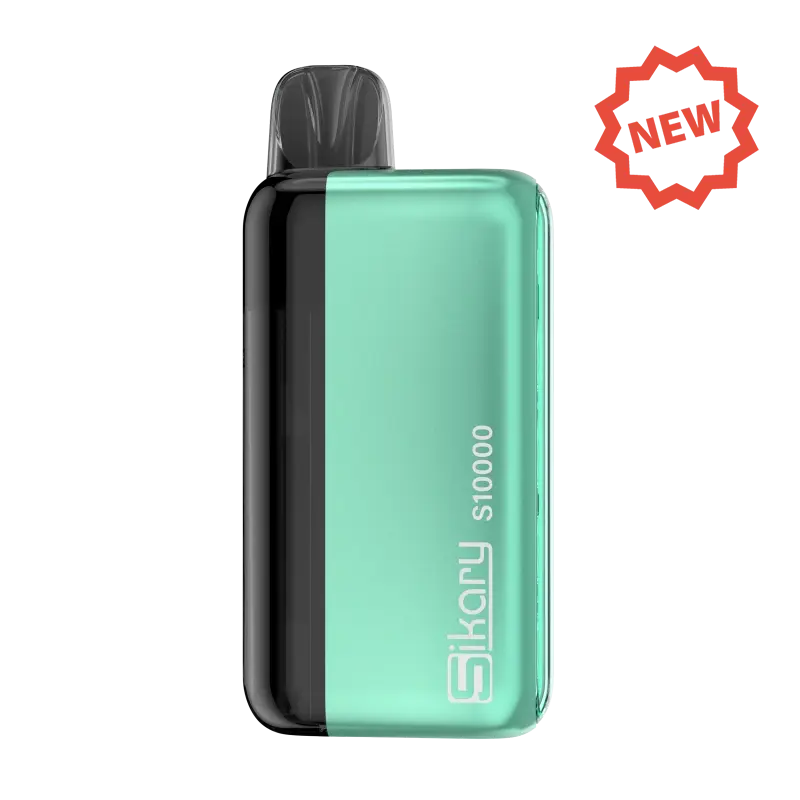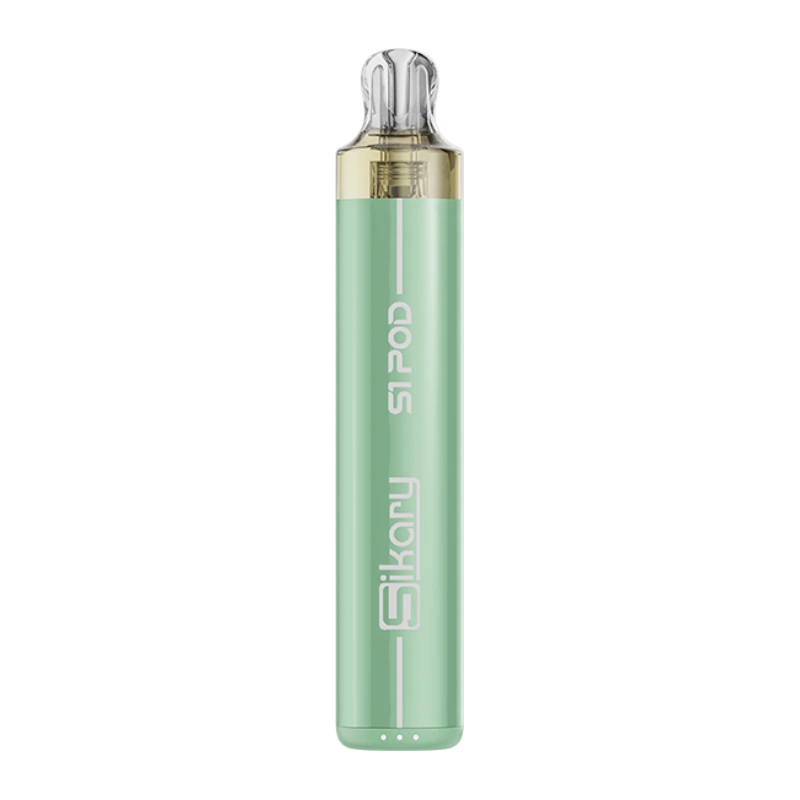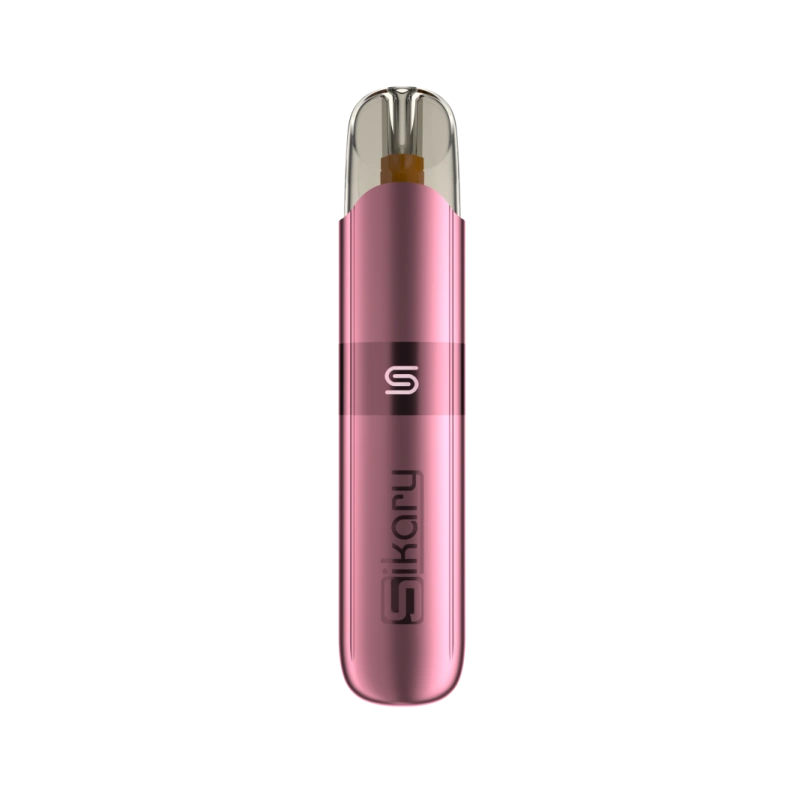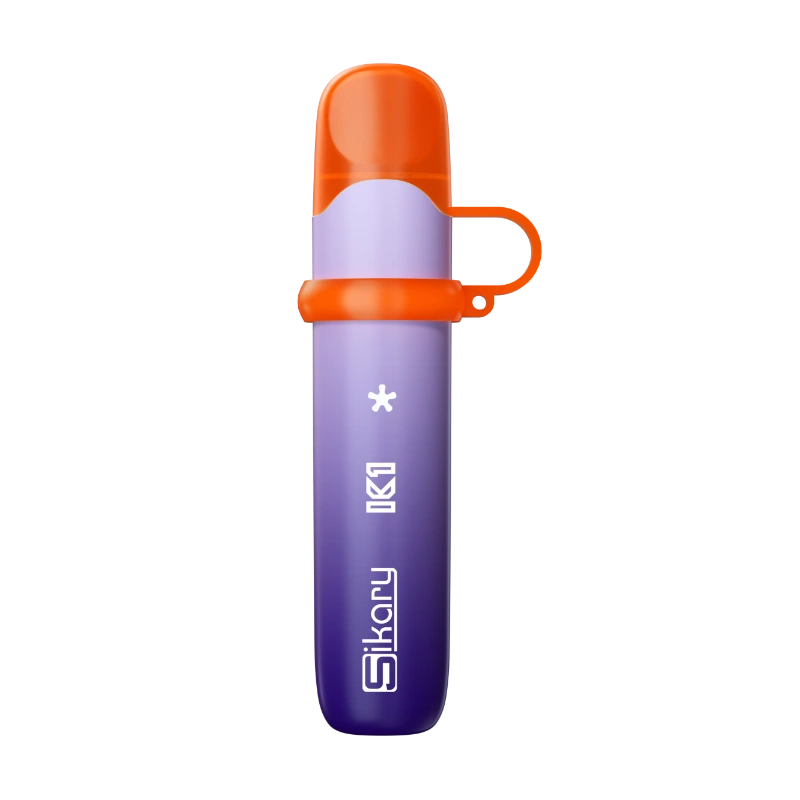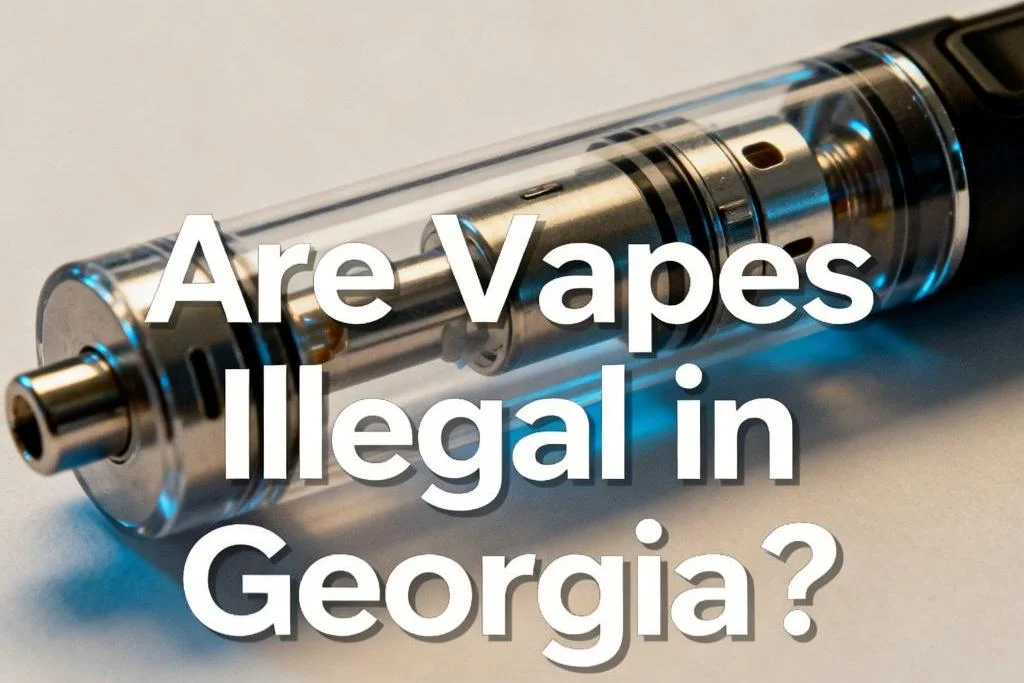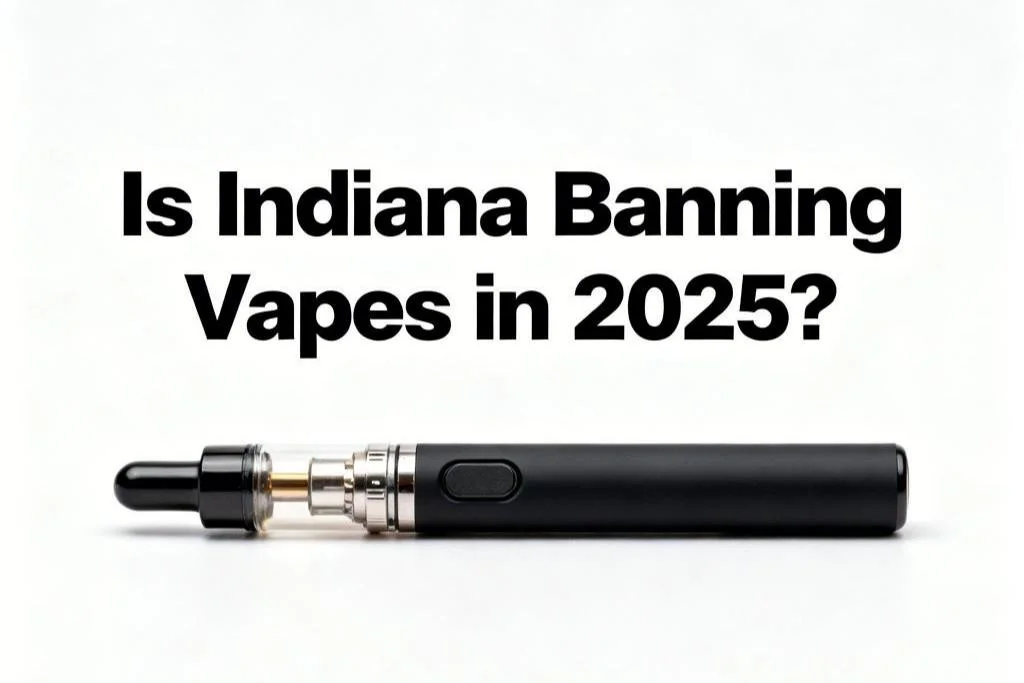Navigation
- Introduction
- What Is an Electronic Cigarette?
- How Does Vape Work?
- Different Types of Electronic Cigarettes
- Benefits of Using Electronic Cigarettes
- Potential Risks Associated with Using Electronic Cigarettes
- An Anatomy of E-Cigarettes
- Battery
- Atomizer
- E-liquid
- Sensor
- Different Vaping Techniques
- Tips for Enhancing the Vaping Experience
- Recommended Cleaning and Maintenance Practices for Vaping Equipment
- Regulations and Legal Considerations
- Etiquette and Restrictions Regarding Vaping in Public Places
- FAQs
- Vaping Terminology
- Write to the End
Introduction
Electronic cigarettes, or e-cigs, have become very popular lately. You may be wondering what they’re all about. Are they really safer than traditional tobacco? How do those cool smoke get to made? And how do you even use an e-cigarette?
Well, confuse no more – I’m going to explain it so you understand them. I’ll cut through the fog of confusion surrounding vaping and e-liquids to give you a clear view of what’s really happening.
This introduction will go through the basic parts of an e-cig. It’ll help new vapers understand how they work. It will also describe the different types of vapes. By the end, you’ll know the main ideas about vaping.
What Is an Electronic Cigarette?
An e-cigarette is a handheld device that mimics smoking a regular cigarette. But instead of producing smoke, it makes vapor.
When a person uses an e-cigarette, they breathe in from the mouthpiece. A sensor sees this and turns on the small wire in the atomizer. The wire heats up the e-liquid. This makes it turn into steam instead of smoke.
The vapor may contain nicotine salt, which is the addictive ingredient in regular smokes. But e-liquids without nicotine are also available.
How Does Vape Work?
All vape pens are not the same. They can have different atomizers, types, or extra parts from one brand to another.
But they all do one main thing: use heat to make vapor without fire.
Inside a vape pen is something that gets hot when you use it. This is called a heating element. When you press the button, it heats up the material from the cannabis plant.
The heat activates the material without burning it. This lets the vapor carry the effects of cannabis.
We call this vapor instead of smoke because there is no fire. You breathe in the vapor instead of smoking.
The heating element is important because it changes the material into vapor without a flame. After the vapor cools down, you can breathe it into your lungs.
Different Types of Electronic Cigarettes
There are several types of electronic cigarettes available on the market. Each type has varying features related to refilling, customization, and the materials that can be vaporized. Understanding the different options helps you choose a vaping product that best suits your personal needs and preferences.
- Closed pod systems – Use pre-filled pods or cartridges that cannot be refilled or customized. Pods are replaced once empty.
- Refillable pod systems – Similar to closed pods but allow users to refill pods with their own e-liquid choice.
- Disposable devices – Completely pre-filled and disposed of once the e-liquid is fully used. No refilling or parts to replace.
- Mod devices – Refillable devices with customizable parts like batteries, atomizers, and tanks. Allow full control over e-liquid and vapor production.
- CBD devices – Designed specifically for use with CBD containing e-liquids rather than nicotine.
- HNB(Heat not burn) devices – Heat tobacco rather than burning it to produce a vapor or aerosol.
Benefits of Using Electronic Cigarettes
There are several potential benefits to using electronic cigarettes instead of traditional tobacco cigarettes.
- Less harmful than traditional cigarettes – E-cigarettes do not involve burning tobacco leaves like regular cigarettes do. This avoids exposure to thousands of chemicals produced from combustion.
- Nicotine delivery without smoke – Vaping allows nicotine users to receive their fix without breathing in smoke, which contains toxicants. Nicotine itself is not considered as dangerous as other chemicals in smoke.
- Harm reduction for smokers – For committed smokers unable or unwilling to quit nicotine entirely, vaping provides a likely less harmful alternative to maintain their nicotine addiction.
- Help with smoking cessation – Many ex-smokers report that vaping helped them quit or transition away from smoking combustible cigarettes for good. The act of vaping substitutes the hand-to-mouth smoking motion.
- Wide variety of flavors – The thousands of available e-juice flavors make vaping a more enjoyable experience for some compared to traditional cigarettes. This supports a successful switch.
- Cost savings over smoking – Vaping turns out to be significantly less expensive than a smoking habit in the long run for most people.
- No lingering smoke smell – Vapor dissipates quickly without leaving behind the stale smoke odor on clothes, hair, furniture, and surroundings.
Potential Risks Associated with Using Electronic Cigarettes
While electronic cigarettes may have certain potential benefits over traditional cigarettes, there are also some important risks to consider regarding the use of e-cigarettes.
- Nicotine addiction – While likely less harmful than smoke, nicotine is a highly addictive substance. Vaping makes it easier to get addicted to nicotine, especially for youth and non-smokers.
- Health effects unknown – The long-term impacts of inhaling vapor over many years are still being researched. Some short-term effects, like increased cough and inflammation, have been reported.
- Lung injuries from vaping – Recent outbreaks of severe lung illnesses linked to vaping THC and vitamin E acetate have caused numerous hospitalizations and deaths.
- Toxin exposure – Though less than smoking, e-cigarette vapor has been found to contain metals like nickel and lead from the device, as well as carcinogens like formaldehyde from the heated e-liquid.
- Gateway to smoking – Youth who vape are much more likely to start smoking cigarettes than non-vapers. The addictive effects and cool image may encourage dual use.
- Expensive habit – While cheaper than long-term smoking costs, vaping can become a pricey addiction, especially when purchasing devices and replacements.
An Anatomy of E-Cigarettes
Now, we will learn more about the parts of a vape pen and how they work together to heat up the material without burning it.
The core components of an electronic cigarette include the atomizer, which contains the heating coil, the e-liquid cartridge or tank that holds the e-liquid, a battery that powers the atomizer, a mouthpiece to inhale from, and often an activation button or switch to power the device.
I will now describe these main components in more detail.
Battery
The battery is an essential component of all electronic cigarettes. It provides the power source needed to energize the atomizer coil and vaporize the e-liquid.
Different Types of Batteries Used in Electronic Cigarettes
- Disposable/non-rechargeable batteries: These are usually small lithium-ion batteries that are included in cheap, disposable e-cigarettes. They provide a limited number of puffs before dying.
- Rechargeable lithium-ion batteries: The most popular rechargeable type, they provide strong performance and are used in most refillable e-cigarettes and vape mods. They need to be charged regularly via USB.
- Rechargeable lithium-polymer batteries: Similar to lithium-ion but with a flexible pouch design. They are often used in compact pod systems for their thin profile.
- Rechargeable nickel-cadmium (NiCd): An older rechargeable type, they have higher self-discharge rates than lithium batteries. It’s not as common nowadays.
- Rechargeable nickel-metal hydride (NiMH): Provides good capacity but is not as high-powered as lithium types. Seen primarily in mid-level vaporizers.
- Discrete button-top batteries: Removable lithium-ion cells expressly made for mechanical mods without regulation circuits. Require safe handling practices.
The type of battery needed varies depending on the specific e-cigarette or vaporizer device. Lithium batteries currently dominate the market for their excellent performance.
Battery Safety Tips to Prevent Overheating and Ensure Proper Charging
- Only use batteries that are compatible with your device. Don’t file down or modify batteries to fit.
- Regularly inspect batteries for any damage, cracks, leaks, or deformities. Replace damaged batteries immediately.
- Never leave batteries unattended while charging. Be present to monitor for any signs of swelling, heat, or other issues.
- Use the proper USB or wall charger that comes with your device. Don’t charge batteries externally or with fast chargers.
- Don’t overcharge batteries. Once fully charged, disconnect them from power. Some devices have cutoff circuits, but better safe than sorry.
- Store batteries at room temperature in a cool, dry place. Avoid high heat sources like cars or direct sunlight, which can cause overheating.
- Don’t allow batteries to discharge too low, as this can damage the cells. Recharge before hitting the threshold indicated by the
- Carry loose batteries in a case or protective sleeve to avoid accidental short circuits from contact with keys, coins,
- Dispose of old batteries properly. Don’t put in household trash, and check regulations for hazardous waste disposal.
Following these battery safety tips can help prevent overheating, fires, and explosions and ensure the lifespan of your e-cigarette power sources.
Atomizer
The atomizer is a core component of electronic cigarettes responsible for vaporizing the e-liquid. It works by using a heating element, often called an atomizer coil, to transform the e-liquid into an inhalable vapor.
The atomizer coil is typically a length of wire made of kanthal, nichrome, or stainless steel wrapped around a wick material like silica, cotton, or ceramic.
When power is supplied via the battery, the coil heats up rapidly due to resistance. The e-liquid is then drawn up the wick, and its contact with the superhot coil causes it to instantly vaporize without burning.
Different Types of Atomizers and Their Functions
- Coil/coil head atomizer: The most common type, it contains a pre-built coil and wick. Used for pods, clearomizers, and most tanks. Easy to replace the entire unit.
- Replaceable/rebuildable coil/cartomizer: Allows replacing just the coil rather than the whole unit. The coil pops into the cartridge base, then screws into the device.
- Rebuildable dripping atomizer (RDA): The user builds customized coils and then adds e-liquid directly without a tank. It offers full customizing but can leak.
- Rebuildable tank atomizer (RTA): Like an RDA but has a tank section on top to prevent leaking. More portable than an RDA.
- Sub-ohm clearomizer/tank: Contain high-performance sub-ohm coils for maximized vapor. Require mod capable of lower resistances.
- Cartomizer atomizer: Self-contained unit with built-in silicone reservoirs holding e-liquid. In this setup, individual coils cannot be replaced; instead, the entire cartomizer needs to be replaced.
- Mesh coil atomizer: The coil is constructed of plain mesh versus wire, providing unique dense vapor volume.
Key Components of Atomizer
The key components of an electronic cigarette atomizer include:
- Heating coil: Usually made of kanthal, nichrome, or stainless steel wire wrapped around a wicking material. It is responsible for heating up when powered to vaporize e-liquid.
- Wicking material: Absorbs e-liquid and transports it to the heating coil. Common materials include silica, organic cotton, and ceramic.
- Coil legs/terminals: The exposed ends of the coil wire that connect to the battery to complete the circuit and power the coil.
- Atomizer deck/base: The platform that holds and connects the coil and wick. It may feature post holes or channels to build coils.
- Airflow control: Adjustable openings that regulate air intake to cool the coil and dilute vapor before inhaling.
- E-liquid feed holes: Channels liquid from the reservoir to saturate the wick and be vaporized by the coil.
- Chimney section: Guides vapor upwards from the coil to the mouthpiece after production.
- Mounting 510-thread: Connection point that allows the atomizer to be securely screwed into compatible devices.
How Do Coil Types and Resistance Affect Vaping Experience?
Higher resistance coils around 1 ohm or more produce less vapor but provide more intense flavor with each pull. Lower resistance sub-ohm coils below 0.5 ohms create thicker clouds but result in a warmer inhale with a slightly diminished taste.
Kanthal and nichrome heating wires vaporize e-liquid swiftly to generate plumes of steam, while stainless steel coils prioritize flavor over vapor volumes. Nickel and titanium wires allow for temperature control vaping modes on compatible devices.
Thicker gauge wire cores require more time to heat the surrounding juice yet deliver a crisp, full-bodied flavor with each puff. Thinner gauge coils heat up immediately to kickstart vapor inception but risk scalding the wicking material or burning the coils altogether.
Massive coil builds with many wrapped loops absorb energy quickly from the battery to reliably satisfy cravings through copious quantities of vapor. However, these hog power and deplete charge swiftly in return for their vaporous output.
Cotton wicks effectively transport e-liquid to the coils while retaining liquid for multiple consecutive toots of vapor. But if oversaturated, the cotton can char, causing an unpleasant smoke taste until replaced.
Matching the coil specs to your preferred vape style ensures an optimal experience without wasting components through unnecessary wear and tear over time.
When Should I Change the Resistance Coil in My Atomizer?
If you notice the amount of vapor produced with each puff has significantly decreased from what you were initially getting, it’s a clear sign the coil is wearing down and needs replacement.
A diminished or changed flavor profile where the flavors taste burnt or muted compared to when the coil was fresh indicates it’s seen better days, and a new coil should be installed.
Over the lifecycle of the coil, it will darken in color as residue builds up on the coil from repeated heating and cooling. An obviously darkened, charred-looking coil needs to be switched out.
You’ll know it’s time for a new coil if you taste a sharp, unpleasant burning, or scorching flavor, as that means the coil has been well and truly fried.
As the coil wears out, you’ll hear noticeably more popping and cracking sounds occurring during use as an indication the coil wires are deteriorating.
Coils that see extensive daily use in heavy vaping sessions may only last around a week before needing changing. Lighter vapers can stretch a coil to two weeks typically.
Most factory coil heads are rated by manufacturers to provide satisfactory performance for 1-2 weeks. Changing before this recommended lifespan is a good habit to maintain optimal vaping.
The small exposed coil leg contacts will also darken in discoloration quicker than the coil itself, as these contact points endure repeated heating and cooling over time from battery power.
How Do You Clean an Atomizer?
Here are the steps to clean an atomizer:
- Remove the atomizer from the device. Unscrew it to separate.
- Dry burn the coil. With no e-liquid in the wick, fire the coil until it glows red to burn off residue. Do this over a rag in case it spits.
- Allow the coil to cool fully, then rinse all pieces in warm water to remove ash. Avoid submerging electronics.
- Use a small brush to gently scrub away debris from coils andChamber. Be careful not to damage fragile coils.
- For cotton wicks, remove the old wicking material. You can rinse the coil and dry it.
- Dry all components thoroughly before rewicking or installing a new coil. An air duster helps.
- Rewick the coil using a fresh piece of cotton. Fluff and thin each end before threading through.
- Reassemble everything and prime the new wick by saturating it with e-liquid.
- Allow 5-10 minutes for the wick to fully saturate before firing and vaping. Enjoy your fresh, clean atomizer!
Regular cleaning prolongs an atomizer’s life. Always dry burn when changing coils to remove gunk buildup.
E-liquid
E-liquid, also called e-juice, is the liquid used in electronic cigarettes and vaporizers. It comes in a variety of flavors and nicotine strengths.
The main components of e-liquid are propylene glycol (PG), vegetable glycerin (VG), nicotine, and flavors. PG and VG are the base liquids that are vaporized when heated.
Nicotine is an optional ingredient that is derived from tobacco plants. E-liquids are available in a range of nicotine strengths from 0mg to 24mg, allowing users to control nicotine intake.
What Are the Dangers of E-liquids?
E-liquids that contain nicotine pose a risk of nicotine poisoning if a sufficient amount is accidentally ingested or absorbed through the skin, as nicotine can cause nausea, vomiting, and even seizures or death in very large doses.
The tempting flavors of some e-liquids, especially sweet and fruity varieties, make vaping appealing to youth and may entice teenagers into trying vaping out of curiosity despite the health risks of using nicotine products.
Some lung illnesses have been tied to black market THC vapes cut with vitamin E acetate, raising concerns, while the long-term effects of inhaling propylene glycol and vegetable glycerin vapor are not fully understood due to the newness of vaping technology.
Overcharging lithium-ion batteries used in vapes or device defects that cause leaks or ruptures present rare but dangerous risks of fires or explosions from thermal runaways if the proper precautions are not followed.
The long-term impact of inhaling compounds like formaldehyde, acrolein, and diacetyl present in some e-cigarette vapor is still being researched and remains unclear at this time.
Without rigorous quality control practices, e-liquids risk contamination from heavy metals, toxic solvent residues, or other dangerous impurities during manufacturing.
Colorful e-liquid labels and child-friendly packaging that resemble juice boxes or candy make the products appealing to kids despite restrictions, and any leakage poses accidental poisoning threats.
What to Do if E-liquid Is Swallowed?
Contact poison control immediately. Call the US National Poison Control Hotline at 1-800-222-1222 for medical advice from experts.
Induce vomiting only if instructed to do so by poison control. For nicotine poisoning, they may have you do this within an hour of ingestion.
Drink water or milk to help dilute the e-liquid. This can help limit absorption in the stomach.
Seek medical attention. Poison control may advise you to go to the emergency room, especially if the person is experiencing symptoms like vomiting, diarrhea, increased salivation, sweating, dizziness, or difficulty breathing.
Provide information. Tell doctors/medical staff what kind of e-liquid was swallowed and the milligrams of nicotine per milliliter it contained.
Monitor symptoms. Watch closely for signs of nicotine poisoning like headache, nausea, and rapid heart rate. Seek help immediately if symptoms worsen.
Save packaging. Bring any leftover e-liquid containers/packaging to the ER for ingredient identification.
Remain calm. Reassure the person and keep them still to avoid accidental spread or further absorption.
Act quickly but cautiously based on poison control’s guidance for the best chance of a quick recovery.
How Should E-liquids and Cartridges Be Stored and Disposed Of?
E-liquids and cartridges should always be kept in their original child-resistant packaging and containers when being stored.
They should be stored in a cool, dry place away from extremes of heat, cold, and direct sunlight, and most importantly, away from any place accessible by children or pets at home.
After each use, make sure to close the lid tightly on any e-liquid bottles or cartridge containers to prevent leaks from developing during storage.
Disposable vape cartridges or empty tank systems can be thrown away in regular trash once all of the e-liquid has been fully used.
Any unused e-liquid bottles should be taken to a local household hazardous waste facility for proper disposal, as many offer take-back programs for vaping products.
As an option, the remaining e-liquid can be poured out into an empty sealed container and taped shut before throwing it in the garbage to avoid accidental access to the liquid.
E-liquids and cartridges should never be flushed down the drain or toilet, as this can contaminate local water sources.
Spent rechargeable batteries used in vapes should be recycled, not thrown in the trash, by taking them to an electronic waste disposal or participating retail stores.
Proper storage and disposal help ensure safety and protect the environment.
How Is Nicotine Strength Measured in E-liquids?
E-liquid nicotine strength is measured in milligrams (mg) per milliliter (mL). Here are some key points about nicotine measurements:
- Most e-liquids range from 0mg/mL to 24mg/mL of nicotine content.
- 0mg/mL e-liquids contain no nicotine. They are used by some ex-smokers or for newcomers to try vaping.
- 3mg/mL and 6mg/mL are common lower strengths for many experienced vapers.
- 12mg/mL and 18mg/mL are mid-range levels that provide nicotine satisfaction for some.
- High-strength 24mg/mL e-liquids are intended for heavy smokers transitioning to vaping.
- Nicotine measurements are clearly listed on e-liquid bottles or packaging. Consumer guidance recommends starting lower if unsure.
- Adjusting nicotine level up or down helps find the proper level to curb cravings without being over or under-satisfied.
- Some manufacturers offer Nicotine Salts for higher absorption, similar to cigarettes.
The mg/mL measurement of nicotine allows vapers to tailor their liquid to nicotine needs and consumption preferences.
What Flavors Are Available?
Flavors can include tobacco, menthol, fruits, desserts, and more. Popular flavor categories include mint, custard, cereal, and bakery varieties. Flavorings are usually natural or artificial extracts.
Sensor
Sensors are essential electronic components inside vaporizer devices that monitor and regulate key parameters. Sensors work together with microchips and controllers to deliver appealing vapor production safely. They help devices automatically adjust performance based on a user’s vaping style. Precise sensing is important for quality vapor and protection.
How Does a Vape Sensor Work?
E-cigarettes that do not have a power button will automatically turn on when the user inhales through it, activating built-in sensors. Meanwhile, e-cigarettes with a power button also rely on internal sensors to detect inhalation and turn on accordingly. In either case, e-cigarettes require sensors to detect user inhalation in order to power on.
Different Vaping Techniques
- Mouth to lung (MTL): Mimicking a cigarette, the vapor is inhaled into the mouth and then the Coils and airflow are tight for dense vapor. Best for lower-power MTL vapes/pods.
- Direct lung (DL): Inhaling directly into the lungs like a hookah. Coils and airflow are optimized for large lung hits. Used with sub-ohm tanks/RDAs at higher wattages.
- Looping: Slowly inhaling to repeatedly pass vapor through the mouth/throat before breathing in fully. Lets you enjoy flavor over an extended period.
- Inhale placement: Some direct inhale deeper into the nasal cavity/sinuses vs. just the lungs for a stronger effect.
- Chaining: Take a series of sequential puffs, one after another, with minimal breaks.
- Snap drag: Take a short, quick puff/inhale rather than long, slow draws. It can produce a throat hit.
- Flavor chasing: Fine-tuning wattage, airflow, and coils to get maximum flavor from specific e-liquids.
- Cloud chasing: Building to push maximum vapor production through big coils and airflow.
Tips for Enhancing the Vaping Experience
- Hydrate before and after. Dehydration can dull tastebuds. Water keeps them primed.
- Drink slowly between pulls. Rushing dulls flavor by overloading tastebuds.
- Choose quality e-liquids made from clean, natural ingredients. Artificial flavors don’t satisfy as well.
- Consider different nicotine levels. Adjust up/down until just satisfied without excess.
- Pull slowly at first, then faster to finish for a layered experience.
- Temperature control lets you adjust for personal preference. Lower heat brings out subtle notes.
- Properly maintain devices and replace coils when needed for consistent vaping.
- Take occasional breaks to keep your vaping experience refreshing.
- Pay attention to e-liquid notes. You’ll taste what they describe more readily.
- Flavor-chase with different wattages and airflows to find personal sweet spots.
- Keep smelling between pulls to notice evolving fragrance profiles as liquids steep.
- Savor smaller, more condensed clouds for a vapor-tasting mindfulness experience.
With patience and attention to small details, vaping becomes a hobby of discovery.
Recommended Cleaning and Maintenance Practices for Vaping Equipment
Coils and atomizers should be replaced when they start to take on a burnt or off-flavor taste, and periodically cleaning them by either dry burning or soaking in high-proof alcohol can extend their usable life.
Tanks should have their coils removed and then be rinsed thoroughly with warm water or wiped down with an alcohol wipe after each refill in order to remove any residual e-liquid or residue buildup. The entire tank should then be wiped down weekly with a dry cloth.
Mods and attached batteries simply require a wipe down of the external surfaces with a dry cloth as needed to remove fingerprints or grime, and checking that all connections are fully tightened is important to avoid issues.
Chargers benefit from regularly wiping down the charging contacts and ports with an alcohol wipe or dry cloth to prevent debris buildup that could interfere with charging.
Rebuildable dripping atomizer (RDA) decks should have their coils and cotton removed after every 2-3 uses, then scrubbing the deck and air rings with a toothbrush under warm running water or dipped in high-proof alcohol helps fully clean them.
Blowing or gently brushing compressed air through any airflow slots on atomizers or tanks keeps them clear of dust or other particles that could restrict airflow over time.
Drip tips should be removed weekly for thorough washing under warm water and a drop of dish soap before being allowed to fully air dry.
E-liquid bottles need to have their caps rinsed clean before closing to prevent drips or leaks, and fully drying all equipment after cleaning prolongs its lifespan.
Regulations and Legal Considerations
Vaping regulations differ significantly between countries and also within states or provinces, so it is important to understand the specific laws that apply locally.
In most areas, the sale of vaping products containing nicotine to minors is prohibited, with minimum age restrictions commonly set between 18 to 21 years old.
Public vaping may be either permitted or banned in the same places where smoking tobacco is not allowed, according to each location’s smoke-free air laws.
The FDA regulates e-cigarettes and vaping items that are made with or deliver nicotine in the United States, requiring manufacturers to submit these products for review and approval.
In response to youth vaping concerns, several jurisdictions have started implementing bans on certain characterizing flavors typically found in e-liquid, excluding tobacco and menthol flavors.
Vaping is usually restricted on airplanes and trains because of safety issues related to lithium-ion batteries, though buses may permit it where smoking is banned.
Some employers prohibit vaping in the workplace due to security, liability, or policies treating it the same as smoking for health or insurance reasons.
Taxation policies and import rules for vaping devices, e-liquids, and components vary between tax regions and international borders.
Illegal THC vape cartridges may face controlled substance laws depending on the status of marijuana in that particular state’s legislation.
It is the responsibility of both consumers and businesses to research and comply with current laws where they reside or operate.
Etiquette and Restrictions Regarding Vaping in Public Places
Here are tips regarding etiquette and restrictions around vaping in public places written in sentences:
Vapers should be considerate of others and avoid blowing large clouds of vapor in areas where it may bother people who do not vape or in enclosed indoor spaces.
Any signs or postings that prohibit vaping or smoking should always be respected, as well as following any applicable laws banning it in areas where smoking tobacco is not allowed.
Public indoor settings like shopping malls, stores, public transportation, and facilities should generally be vape-free unless the policy explicitly permits it.
Designated outdoor smoking areas are usually acceptable places to vape, but be sure to check for any restrictions against electronic cigarettes.
In locations where people may be eating, such as restaurants, it is best to be discreet and polite when vaping and ask permission if unsure about the establishment’s policy.
Medical settings like hospitals should always be vape-free due to health issues, and all facility rules are important to follow.
Use common sense around children and do not exhale large clouds of vapor without consent in areas where they may inhale it secondhand.
Coils, pods, and other vaping waste should be disposed of properly in the trash and not left in public receptacles.
Vaping while operating a vehicle should be avoided as it can be distracting, but it is okay to pull over safely first if necessary.
If offering someone a puff, be polite and descriptive so they can refuse without awkwardness if they are not interested.
Courtesy and respecting boundaries help avoid complaints when vaping in shared public spaces.
FAQs
1. Is vaping really safer than smoking?
E-cigarettes may be safer than normal cigarettes. This is because they don’t burn things like tobacco. But more research still needs to be done on their long-term effects. Some people use e-cigarettes to help stop smoking or just because they like the different flavors.
2. Is it safe to vape around children?
When it comes to vaping around children, safety should be the top priority. Here are a few key points to consider:
- Secondhand vaping: The long-term effects of secondhand vaping are unclear, as the technology is new. It exposes children to nicotine, heavy metals, and other compounds. Nicotine is highly addictive and can harm brain development in children.
- Accidental exposure: E-liquids contain nicotine, which is poisonous even in small doses for children. Curiosity and leaked/spilled e-liquids put kids at risk of accidental exposure or poisoning. Any evidence also suggests vaping may encourage youth to use cigarettes later.
- Exposure to peer influence: Seeing others vape can make vaping seem fun, harmless, and normal to children. Over time, this can influence their own behavior and perspectives.
- Establishing positive habits: Children learn from their environment and role models. Exposing them to vaping undermines efforts to cultivate healthy norms around substance use.
- Safety best practices: While not ideal, the American Lung Association recommends vaping only in well-ventilated areas away from children and never in places like cars or homes where children are present. Vaping should be discussed with care when kids are around.
The normalization of vaping around children poses health and behavioral risks. It’s always best to keep vaping away from kids until more long-term research clarifies safety.
Vaping Terminology
The world of vaping utilizes a variety of specialized terms and acronyms that may be unfamiliar to those new to the growing electronic cigarette community.
Common Terms and Acronyms Used in the Vaping Community
Vape/vaping – The act of inhaling and exhaling an e-cigarette or vaporizer.
E-liquid – The flavored liquid used in e-cigarettes and most vaporizers containing nicotine, vegetable glycerin, propylene glycol, and flavorings.
MOD – A vaping device that is more advanced than a basic e-cigarette, often with variable voltage/wattage.
RDA – Rebuildable dry atomizer, a type of atomizer that stores e-liquid in a tank.
RTA – Rebuildable tank atomizer, similar to an RDA, but has an e-liquid reservoir.
RDTA – Rebuildable dripping tank atomizer, combines features of an RDA and RTA.
Sub-ohm – Refers to atomizers with a resistance under 1 ohm, used with high-wattage MODs.
MTL – Mouth-to-lung, simulating cigarette puffs by inhaling into the mouth first.
DTL – Direct-to-lung, inhaling directly into the lungs like a hookah or joint.
VG – Vegetable glycerin, a common base in e-liquids that produces vapor.
PG – Propylene glycol, a common base that carries flavorings better than VG.
DIY – Refers to making your own e-liquid from flavor concentrates, VG, PG, and nicotine.
Coil – The metal heating element inside e-cig atomizers that vaporizes e-liquid.
Ohm – Unit for measuring electrical resistance (Ω).
Coil terminology
Clapton coil – Coil wrapped with a wire that has been wrapped by a thinner wire, producing extra surface area.
Fused Clapton – Variation using two or more wires wrapped in parallel before wrapping the coil, resulting in excellent flavor.
Alien coil – Novel wire wrapped in a helical fashion with 2-3 core wires for Increased surface area.
Staggered Fused Clapton – A type of fused Clapton where the wrapping wire is wrapped at an angle rather than straight.
Quad/Parallel coil – Four strands of flat/round wire wrapped parallel, increasing current carrying capacity.
Twisted coil – Two or more strands of wire twisted together before wrapping the coil for additional surface area.
Single/Basic coil – The simplest coil uses a single strand of wire directly wrapped around the core. Good for experimenting.
Gauge – Measurement of wire diameter, with higher gauges indicating thinner wire (26-36 gauge most common).
Resistance – Measurement in ohms that determines power output and heat flux generated.
Wicking – The cotton or other material absorbs e-liquid and feeds it to the coil surface.
Write to the End
In conclusion, whether just starting out or deep into the hobby, the world of vaping has something to offer. For beginners, this guide breaks down some of the most common terminology used in the vaping community.
Starting with simple, pre-filled systems like cigalikes or pod mods allows trying vaping with minimal investment and commitment. This avoids the perceived complexity of rebuildable atomizers upfront. But over time, experimenting with different Variable Wattage mods and replaceable coil tanks allows for finding preferred flavors and vapor production.
And for more advanced vapers, rebuilding atomizers offers ultimate customization through mastering different coil types and builds. No matter the experience level, safety must always be the top priority through proper maintenance, regulatory compliance, and courtesy to others when vaping in public.
With responsible usage and a willingness to learn, vaping presents alternatives to traditional cigarettes and opportunities for enjoyable personalized vapor experiences for both newcomers and veterans of the growing global vaping community.
Read More

